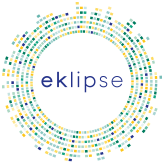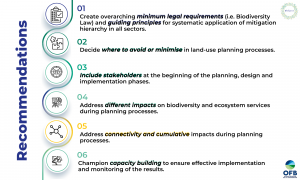Timeline
Date request received: April/2020
End of Call for Knowledge (CfK): 11/12/2020
Call for experts (CfE): 12/05/2021
Methods protocol open review: 9/11/2021
Final evidence report open review: 20/12/2022
The first step of the mitigation hierarchy consists in avoiding that a project, a plan or a program negatively affects biodiversity, including ecosystem services. In practice, the implementation of the hierarchy shows that the first step is neither correctly applied nor well-documented. A common mistake is the lack of consideration for ecosystem services at the “avoid” (but not only) hierarchy stage. The knowledge gap does not seem to explain this state of play because the scientific community developed many tools and methods to assess ecosystem services over the last decades. We advocate that the development of a simple, ready-to-use decision-making tool could increase the consideration for ecosystem services. A preliminary step should clarify whether and how the consideration of ecosystem services fosters the preservation of biodiversity. The Eklipse approach would be very useful for reviewing and synthesising the existing practices in EU member states.
Scoping phase
The Document of Work (DoW) described the results of the scoping activities and the background of the request and was the basis for the call for experts.
Answering the request
Selection of an Expert Working Group
To answer this request, Eklipse sent out a Call for Expertise (CfE) and received 33 applications, from which 12 experts were selected in February 2021. These experts covered a broad range of expertise, gender and geographical representation to form the Eklipse Expert Working Group (EWG). Two experts dropped out in the beginning due to unavailability.
Methods Protocol
The next step was for the EWG to develop a methodological protocol based on the DoW, including the scientific aspect of a thorough literature search and possible appraisal.
The methods protocol was open for public review until the 9th of November, 2021. From the consultation process, six reviews were received. The EWG answered and integrated the reviewer’s comments, and the final version of the methods protocol with be downloaded in the Final outputs section (above).
Finalisation
The draft report developed by the expert working group to answer the question of “how we can improve adherence to the mitigation hierarchy using ecosystem services with particular focus on the avoid stage?” was released for external review in December 2022. The EWG has integrated the comments from this process, and the final report is publicly available on our website.





